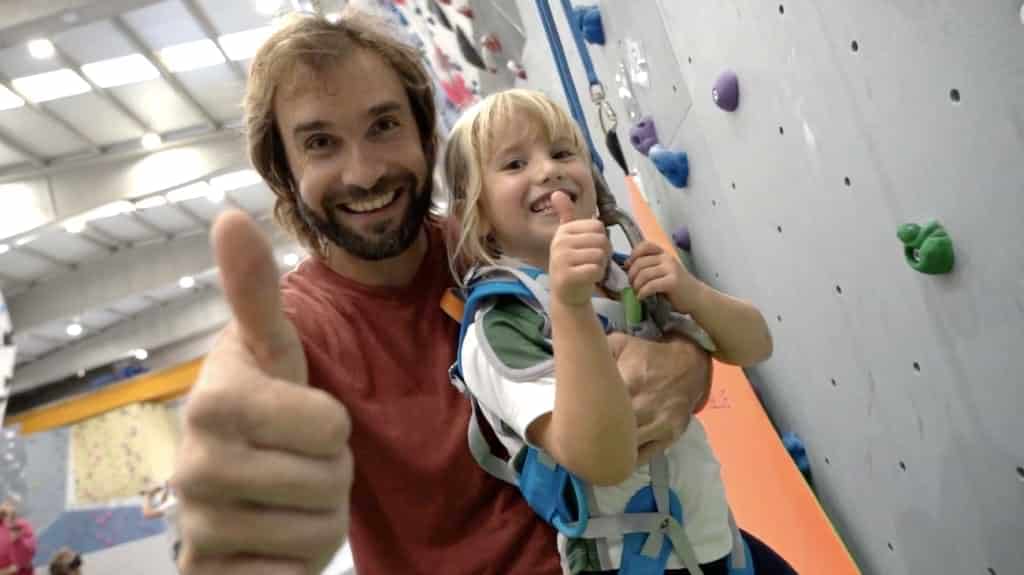A recent study from the University of North Florida found that tree climbing can improve your cognitive skills. This fact was discovered when researchers were testing the link between proprioceptively demanding training and working memory. Proprioception is your awareness of your body orientation and positioning. It is how you are able to type on a keyboard without looking at your hands or grab your cup of coffee without taking your eyes off the road. Your working memory is your short term memory that you use to make connections and manage multiple streams of information in the moment during an activity. The classic example of working memory is doing a math problem in your head without using a pen and paper.
The study found that activities which focused on body orientation and at least one other variable such as locomotion or navigation improved working memory by 50%. You may be asking, “What does climbing trees have to do with it?” Tree climbing includes all of these essential elements. When you climb a tree you are choosing which branch to grab, you are physically moving from one location to another and you are using proprioception to make sure that you don’t fall out of the tree or bump your head. This combination of multitasking and real-time problem solving makes tree climbing a perfect training regimen for your working memory.
Past studies have already established that working memory is crucial to sports performance. This is because athletic performance relies on your ability to judge distance, appropriate force and joint alignment. Working memory is crucial for managing these variables. Working memory also affects, reading, multitasking, learning, reasoning and mental health. While it is clear that working memory supports performance in proprioceptively demanding activities like tree climbing it was not clear whether these activities had an effect on working memory. Now we know it’s a two way street.
Like any good study the researchers used control groups to isolate variables that would potentially affect working memory. Neither of the control groups climbed trees at any point during the study. The first group was a classroom of students that they tested before and after a lecture. This was done to see if the act of learning or engaging in mentally demanding activities would increase working memory. The class did not significantly improve their working memory.
Researchers also wanted to determine if solely focusing on body orientation and positioning would increase working memory. The second control group was a yoga class. They chose yoga because, it is a proprioceptive activity and because, other scientific studies have established that yoga has many benefits beyond increasing flexibility and strength. Research has found that yoga can improve your attention and prevent injury. Despite those other benefits the control group did not find significant improvements in working memory after doing yoga.
The lack of improvement in the control groups demonstrates that you cannot separate these factors and still gain the benefits in working memory. You won’t improve your working memory only by working out your brain and you also won’t improve your working memory by only focusing on body awareness. Even though this study provided a bounty of insights there are still a lot of unanswered questions. It’s still unclear whether climbing trees for different lengths of time affects the degree of improvement in your working memory. It’s also unclear whether tree climbing affects different types of memory such as spatial, verbal or visual memory. Hopefully more research will be done on this topic in the future.
Now that you know tree climbing can help you remember where you left your keys, how can you take advantage of this knowledge without the risk of breaking your neck? If the tree in your backyard doesn’t have enough branches you can buy an Arboreal tree climbing system and outfit your back yard with environmentally friendly climbing holds. You can even buy a Universal Mount so you can set up a top rope and safely belay your family up and down your new route. There are also numerous adventure parks and high ropes courses across the world and the obstacles in these courses will provide the unpredictable movement needed to stimulate your working memory. It would also make sense that rock climbing could provide the same benefits as tree climbing. Climbing gyms are springing up all over the place these days. There’s probably a climbing gym close to you or there will be one soon. Climbing gyms provide routes with different degrees of difficulty so more likely than not they will have something that is tailored to your particular skill level.
If you decide you want to go tree climbing but don’t want to use any of these commercial options please be safe. Pick a healthy tree with big strong branches that will support your weight. Use safety equipment whenever possible! When you are climbing up a tree make sure that you can climb back down. Most importantly use common sense and and have fun, knowing that all that effort might actually be making you smarter.
References
Alloway, Ross G., and Tracy Packiam Alloway. “The Working Memory Benefits Of Proprioceptively Demanding Training: A Pilot Study 1 , 2.” Perceptual and Motor Skills 120.3 (2015): 766-75. Print.




Leave a Reply